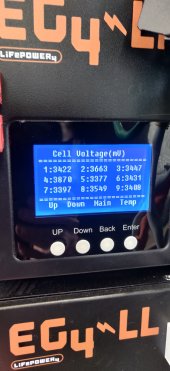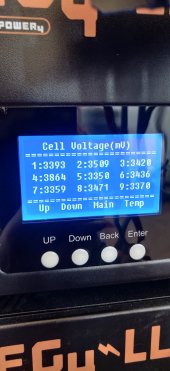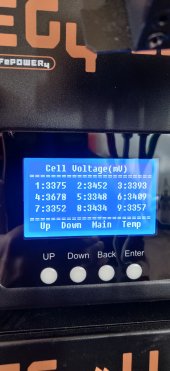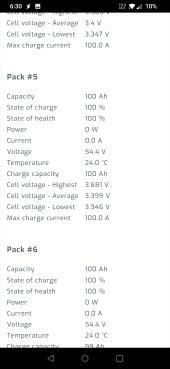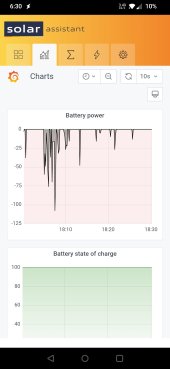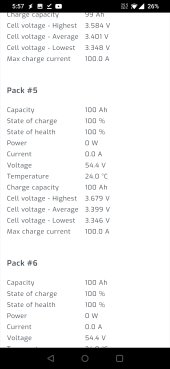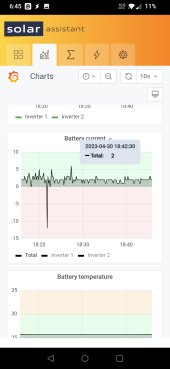I have a rack of six 48 volt EG4 LLV1 batteries that I've just started using even though I purchased them almost a year ago. I just got my solar actually set up and charge them fully for the first time. I'm using an EG4 6500 inverter.
4/27 charged with USE settings to 55.5V with about 16 amps per battery. (Max my solar could do). One battery had over voltage protection kick in from an overvolted cell. (3.9V)
4/28 Try again but when it gets close to full I lower the amperage to 20 amps total which is 3.33 amps per battery. Several batteries overvolt this time.
4/29 this time I figure maybe the battery can do a better job if I set it up to use EG4 mode where the BMS controls the charge rate. I'm away when the charging is done but I can see from solar assistant that it took the battery voltage to 56 and charged for like 5 hours at only 1 amp across the entire rack of batteries so I figure that had to get it fairly balanced right.
4/30 charge again with EG4 mode two batteries over volt and all but one of them have one or two wildly out of balance cells.
Swapped it back to use mode and I can charge it at 54.7 without overvolting cells but if I go higher than that they will probably overvolt. I also took a picture of the worst offender the first day, and if I compare that to today the battery appears to be even more out of balance which is boggling my mind.
In the pictures you can see cell 4 which is the worst offender in the entire rack for overvolting the first day was at 3.87 and today is at 3.864 so roughly the same but cell 9 for example is at a lower voltage today then it was the first day. They should be getting closer together not farther apart yes?
4/27 charged with USE settings to 55.5V with about 16 amps per battery. (Max my solar could do). One battery had over voltage protection kick in from an overvolted cell. (3.9V)
4/28 Try again but when it gets close to full I lower the amperage to 20 amps total which is 3.33 amps per battery. Several batteries overvolt this time.
4/29 this time I figure maybe the battery can do a better job if I set it up to use EG4 mode where the BMS controls the charge rate. I'm away when the charging is done but I can see from solar assistant that it took the battery voltage to 56 and charged for like 5 hours at only 1 amp across the entire rack of batteries so I figure that had to get it fairly balanced right.
4/30 charge again with EG4 mode two batteries over volt and all but one of them have one or two wildly out of balance cells.
Swapped it back to use mode and I can charge it at 54.7 without overvolting cells but if I go higher than that they will probably overvolt. I also took a picture of the worst offender the first day, and if I compare that to today the battery appears to be even more out of balance which is boggling my mind.
In the pictures you can see cell 4 which is the worst offender in the entire rack for overvolting the first day was at 3.87 and today is at 3.864 so roughly the same but cell 9 for example is at a lower voltage today then it was the first day. They should be getting closer together not farther apart yes?
Attachments
Last edited:



